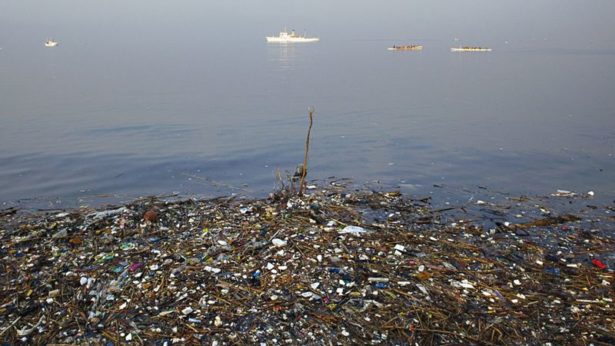
Plastic is one of nature’s biggest enemies, we all know that. But did you know that plastic pollution has gotten so bad that it formed a garbage island in the ocean? You read that right. There’s an entire area in the middle of the ocean that is covered in plastic and there’s very little that can be done about it. Worrisome, right?
Keep on reading to learn more about this bizarre and, frankly, sad topic.
Garbage Island in the Ocean – What is it?
What is informally known as an island, it’s actually a floating surface area known as the Great Pacific garbage patch that’s been growing since the 80’s. The patch was discovered in 1985 by a group of Alaska-based researchers carrying measurements for their research on neurostonic plastic in the North Pacific Ocean.
The patch was created by gyres, namely ocean currents followed by strong winds, in the Pacific Ocean. The currents trap the plastic and encapsulate it in a stationary area of the Pacific, letting it grow with time as more and more plastic is released into the water.
Though one may expect to see an infinite amount of plastic bottles, bags and various objects floating on water, in reality, the patch can’t be seen with the naked eye and is only detectable through specific measurements of water samples.
Garbage Island in the Ocean – Where is the Garbage Island in the Ocean?
The main Garbage Patch is location in the North Pacific, somewhere between Japan and the United States, right in the middle of the North Pacific Gyre. Due to its size, it’s hard to identify where it begins and where it ends, thus it’s exact center is a rough estimate.
Garbage Island in the Ocean – Size
A lot of research has been done regarding the size of the patch, yet its precise measurements are still unknown. The main reason is visibility. Due to its very low density, the patch is practically invisible to sailors from their boats or divers, resulting in researchers having to guide their findings by sampling the water and checking for debris.
Furthermore, there is no standard to asses plastic debris concentration against. As such, it’s difficult to determine what is “normal” and what is characterised by “elevated” levels of pollutants, making the calculation of the measurements rather speculative.
The current estimate ranges between 700,000 square kilometers, which is roughly the size of the state of Texas, and 15,000,000 square kilometers, about the size of the USA.
Garbage Island in the Ocean – Facts
- In 1999, returning home from a sailing race through the North Pacific Gyre, Charles J. Moore stumbled upon an extensive area covered in floating debris. The area is now known as the “Eastern Garbage Patch”.
- Unlike organic debris that biodegrades within a short period of time, plastic particulates slowly disintegrate into smaller and smaller pieces until they reach their molecular level. The smaller they get, the closer to the surface they will concentrate, eventually becoming stationary all the way at the top and becoming food for the marine life that feeds at shallow depths, thus entering the food chain.
- Though plastic degrades down to minuscule particles, the concentration is still highly concerning. In a recent study, it was found that the overall concentration of plastics in certain areas around the oceans, including the Great Pacific garbage patch, was seven times higher than that of zooplankton.
- Not only does the presence of plastic in the ocean represent a danger for at least 267 species of marine wildlife as found by recent studies, the problem is also directly related to humans through the consumption of fish characterised by high levels of toxic chemicals, leading to a wide range of diseases and illnesses hard to treat.
- The United Nations Ocean Conference recently estimated that by 2050 the ocean will carry more weight in plastics that in fish.
- Located in the South Pacific and completely inhabited, Henderson Island has been recognised as the most plastic-polluted island on Earth. It’s currently covered in about 38 millions pieces of trash, with 3,500 pieces washing up on its shores every day. However, what’s even more alarming is the fact that Henderson Island is a United Nations World Heritage site and one of the largest marine reserves in the world. To say that’s sad, doesn’t even cut it…